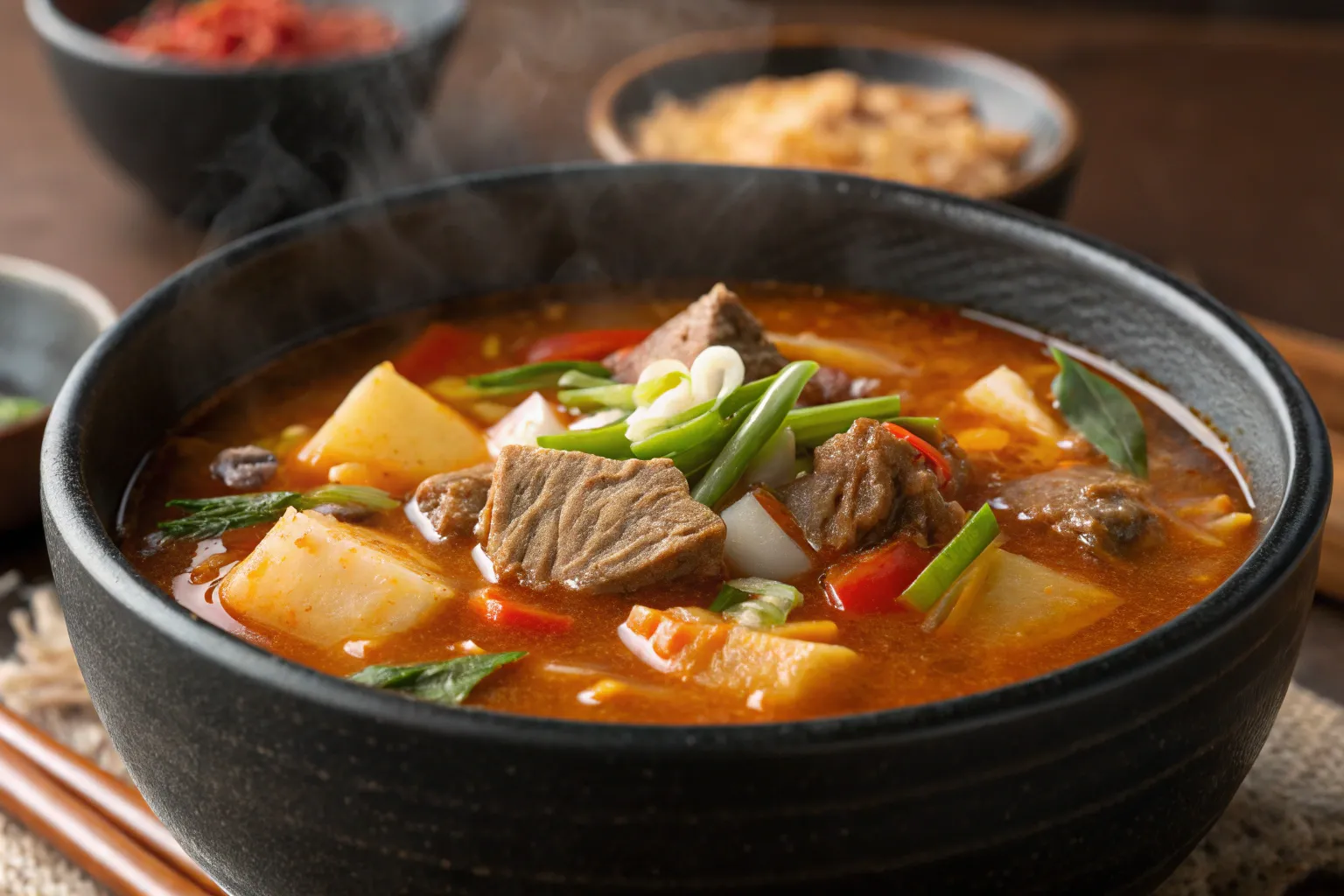Tasty Korean Winter Soup
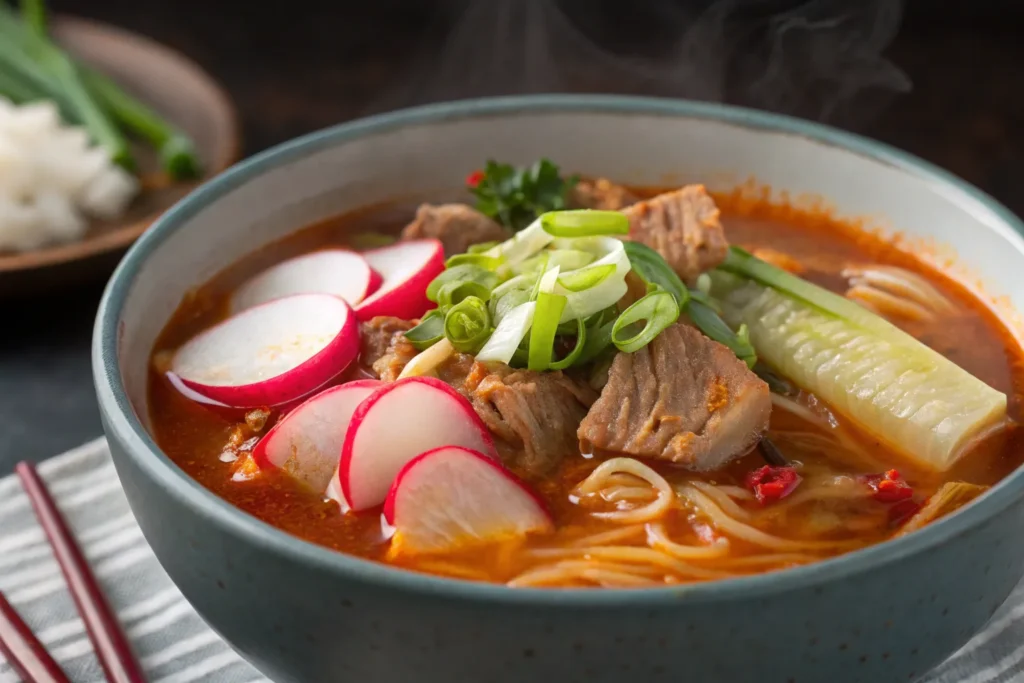
When the cold winter winds start blowing, nothing feels more comforting than a warm bowl of Korean soup. Known for their depth of flavor, nourishing ingredients, and balance of spice and warmth, Korean winter soups are the perfect way to stay cozy while enjoying a delicious and satisfying meal. From rich broths to spicy stews, every spoonful carries the essence of Korean home cooking and tradition.
The Essence of Korean Winter Comfort Food
Korean cuisine is deeply rooted in the idea of harmony—balancing taste, texture, and nutrition. Soups, known as guk, jjigae, or tang, play a vital role in Korean dining culture. During winter, these soups are not just meals but a way to fight the cold and support immunity. Common ingredients include garlic, ginger, soy sauce, gochujang (Korean chili paste), tofu, mushrooms, and hearty vegetables. Each soup has its own story and health benefits, often passed down through generations.
Popular Korean Winter Soups to Try
Kimchi Jjigae (Kimchi Stew)
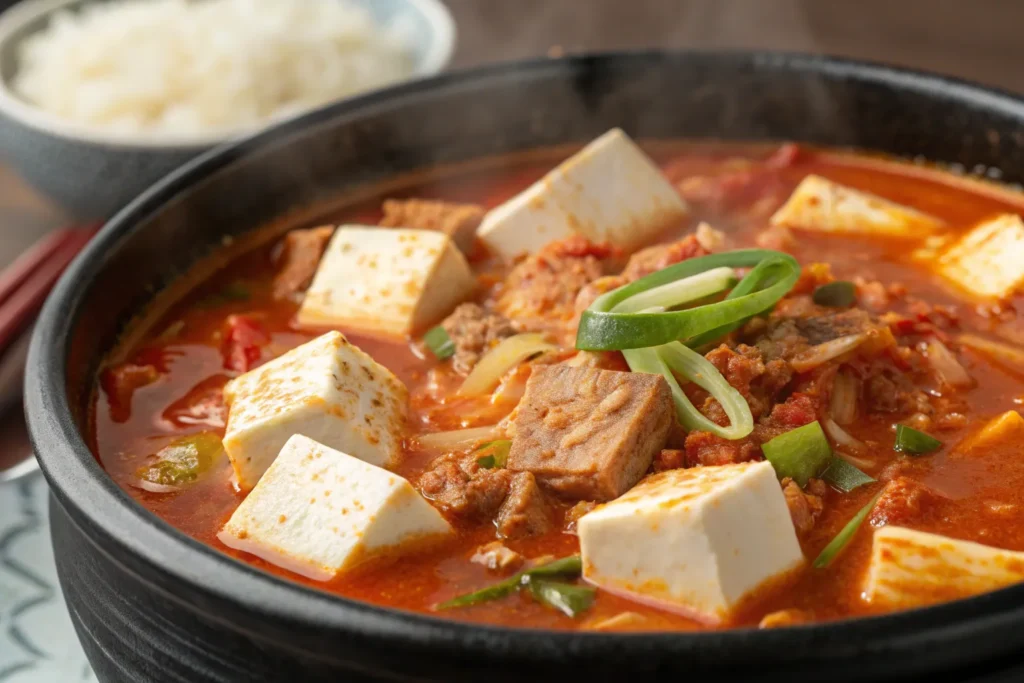
One of the most beloved Korean soups, Kimchi Jjigae combines aged kimchi with pork, tofu, onions, and a flavorful broth. The fermented kimchi gives the soup a tangy, spicy flavor that perfectly warms you up. It’s simple yet deeply satisfying, especially when served bubbling hot with a bowl of steamed rice.
Doenjang Jjigae (Soybean Paste Stew)
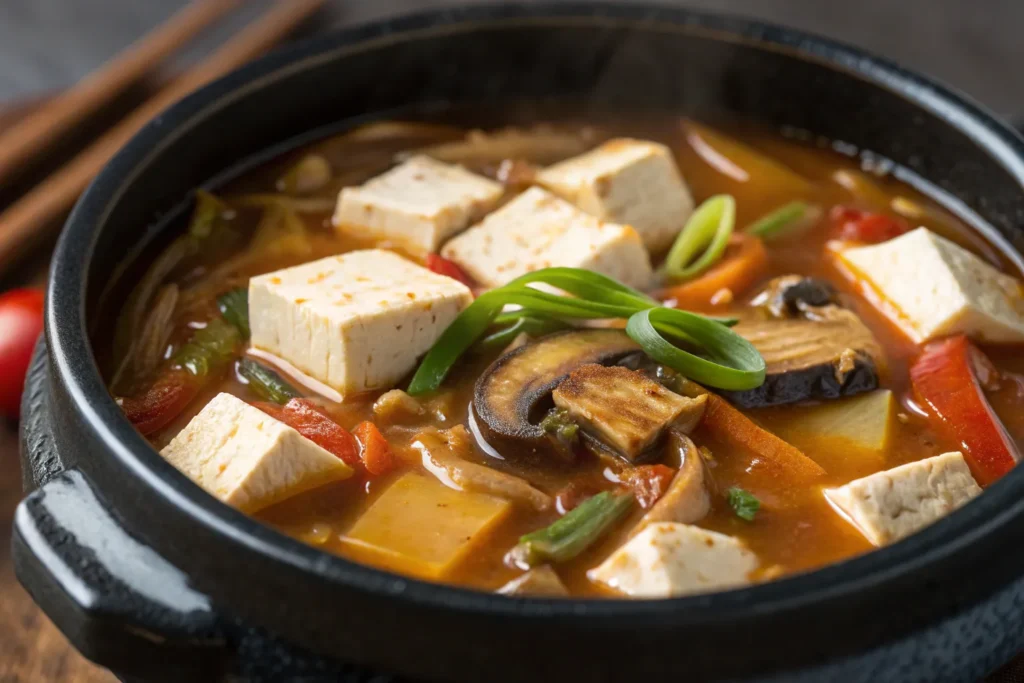
This hearty stew is made with fermented soybean paste, creating a rich umami flavor. Doenjang Jjigae usually includes tofu, zucchini, potatoes, mushrooms, and garlic. It’s a wholesome soup packed with protein and minerals, perfect for a light yet nourishing winter dinner.
Gomtang (Beef Bone Soup)
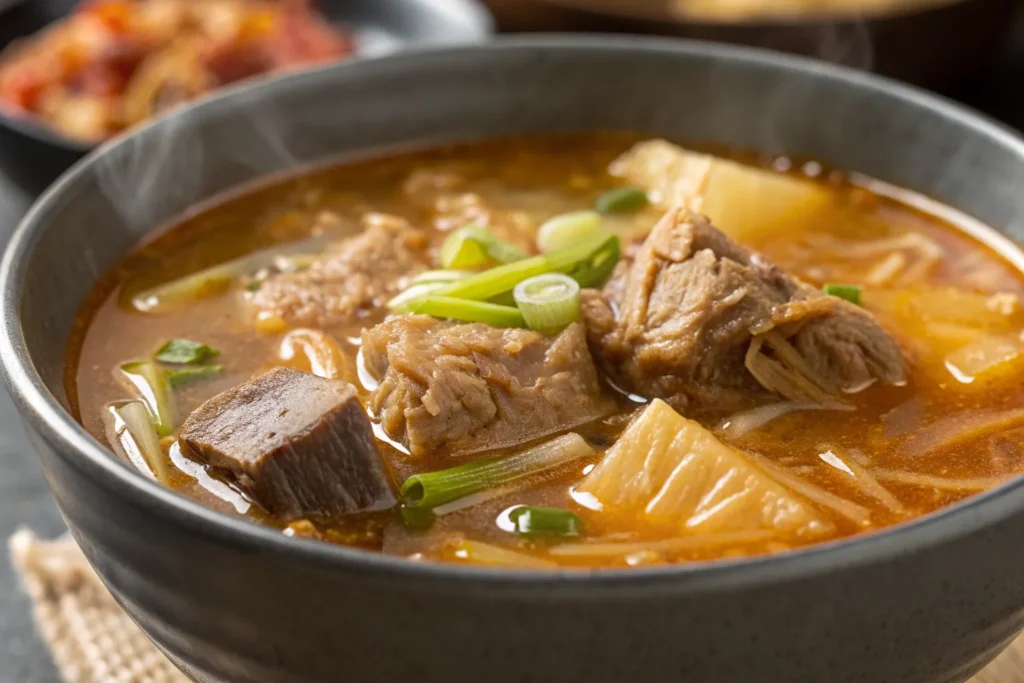
Gomtang is a classic winter soup made by simmering beef bones for hours until the broth turns milky white. The result is a rich, hearty soup that’s both soothing and nutritious. It’s lightly seasoned with salt and green onions, allowing the natural flavor of the beef to shine.
Sundubu Jjigae (Soft Tofu Stew)
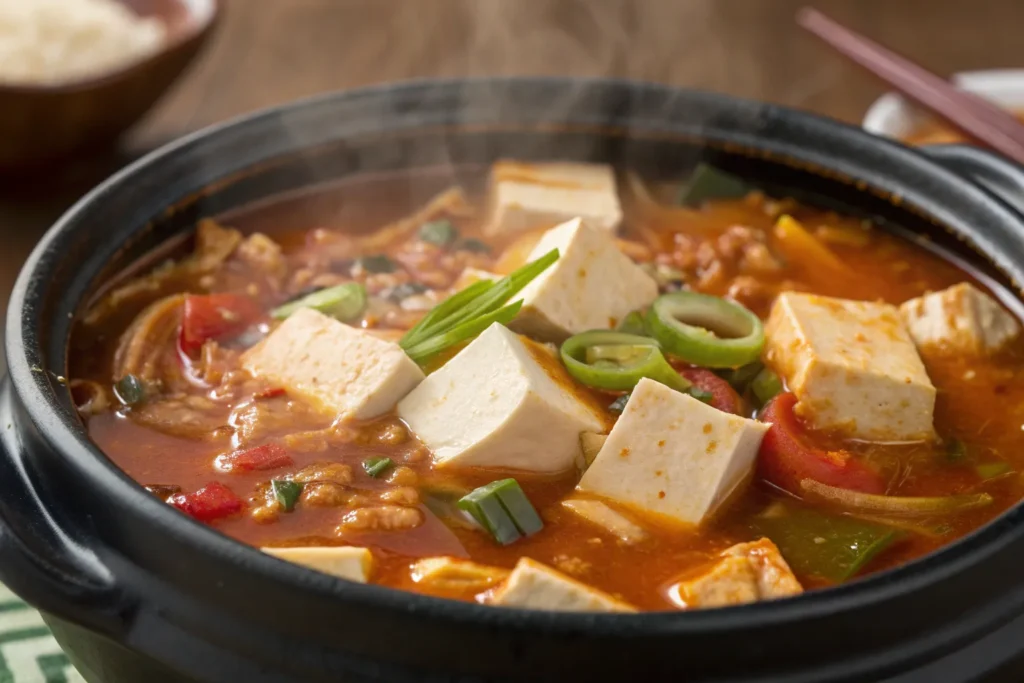
This spicy tofu stew is another winter favorite. It features soft tofu, seafood or beef, vegetables, and an egg cracked in right before serving. The spicy gochugaru (Korean red pepper flakes) broth gives it a kick that instantly warms you from the inside out.
Samgyetang (Ginseng Chicken Soup)
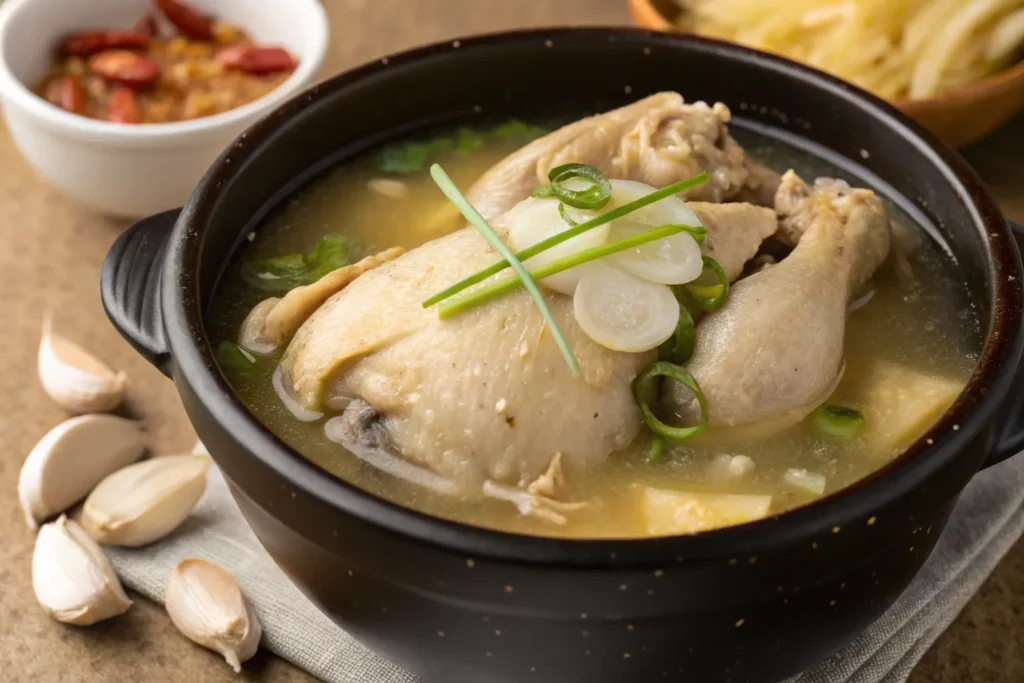
Traditionally enjoyed for its healing properties, Samgyetang is made by simmering a whole chicken stuffed with rice, garlic, jujube, and ginseng. It’s believed to boost energy and strengthen the immune system—making it ideal for cold weather or when you’re feeling run down.
Tips for Making Korean Soup at Home
When preparing Korean soups, patience is key. Many recipes require slow simmering to bring out the deep flavors of the ingredients. Use fresh vegetables and high-quality broth or stock as your base. For spice lovers, adjust the amount of gochujang or chili flakes according to your taste. If you prefer a milder version, try adding more tofu or rice cakes to balance the spice.
Fermented ingredients like kimchi or doenjang are central to Korean soups—they provide not just flavor but also probiotics that are good for digestion. Don’t be afraid to experiment by mixing different vegetables or proteins. Korean soups are versatile, and every family adds their own twist.
Serving Suggestions
Korean soups are often served with a side of rice and a few banchan (small side dishes) such as kimchi, pickled radish, or seasoned spinach. This combination turns a simple soup into a complete, balanced meal. You can also enjoy it with a warm cup of barley tea for a fully authentic Korean dining experience.
A Bowl of Warmth and Tradition
A bowl of Korean winter soup is more than just food—it’s comfort, culture, and warmth all in one. Whether you’re craving the spice of Kimchi Jjigae, the richness of Gomtang, or the gentle nourishment of Samgyetang, these soups bring people together and offer a moment of peace in the cold winter days. Once you try making one at home, it will quickly become a winter favorite on your table.
Conclusion
Korean winter soups capture the true spirit of comfort food, simple, hearty, and deeply nourishing. Each bowl tells a story of tradition, family, and the art of turning humble ingredients into something extraordinary. Whether you choose the fiery warmth of Kimchi Jjigae, the earthy richness of Doenjang Jjigae, or the soothing simplicity of Gomtang, these soups offer more than flavor — they offer a feeling of home.
As the temperature drops, let these Korean soups warm your hands and heart. They’re perfect for cozy nights, family gatherings, or when you simply need a comforting meal that brings balance to your body and soul. Try one today and experience the harmony of spice, aroma, and tradition that makes Korean cuisine so timeless.

